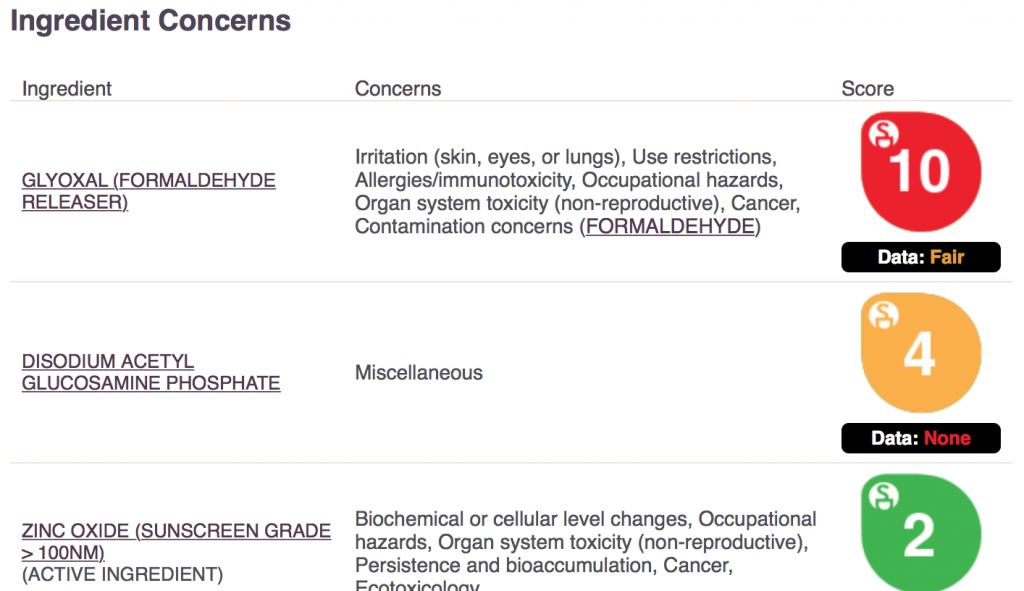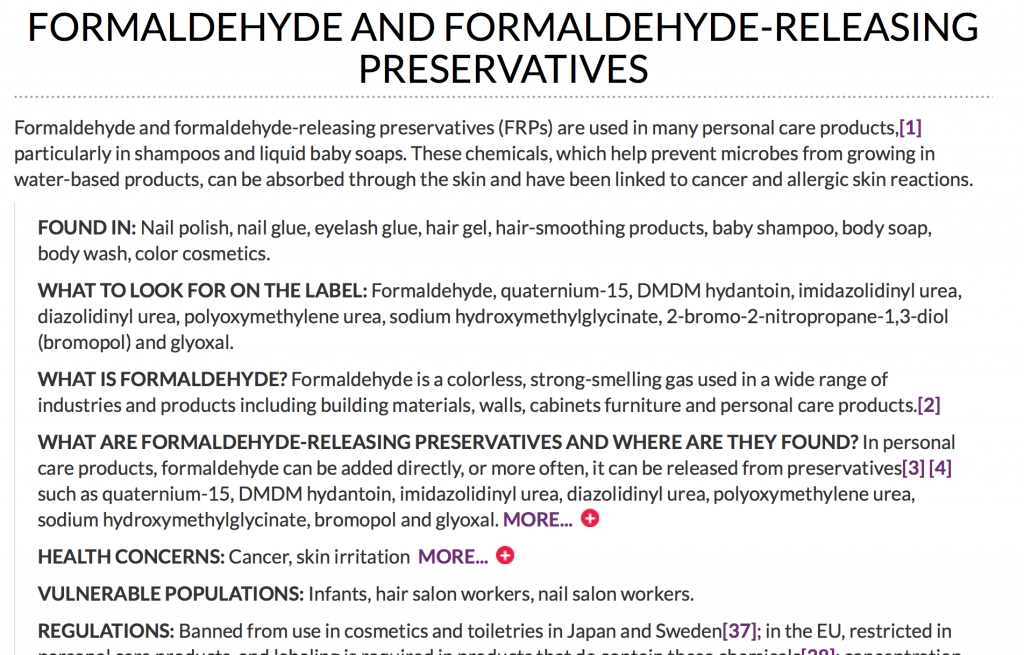 I have to speak up.
I have to speak up.
I see so many people I know, and care about, marketing skin care products that they believe are “healthy.”
And it bothers me, morally and ethically, because I know otherwise.
Full disclosure – I am on the Scientific Advisory board for company that has several product divisions, the newest one being anti-aging skin care. I started before that product line was announced and have been educating distributors and customers about why what you put on your skin matters, the health repercussions of many personal care product ingredients, and the product since it’s launch in November 2015. My intention for writing this is not because I happen to sell or represent this line. I don’t care whether you buy my product or brand. I do care that since I became a naturopath, this has been a vitally important topic for my clients embarking on the journey towards more vibrant health. Because more and more of my friends are representing companies and products, and the topic of non-toxic skin care is what I teach about every day, I’m finally speaking up about something that has been on my heart for a long time. This article is long, yet follow my logic through to the end, and you’ll understand why cannot be discussed in a short one.
There are times where I get into awkward situations.
I get invited to home parties for skin care brands I know are not what they claim to be.
I see the enthusiasm in my friends, who are excited to share what they’ve discovered, and I get a pit in my stomach.
Because we are friends, I happen to know that they are really health conscious. I know it matters to them, from the many conversations we have had.
Do I say something?
Do I educate my friends on what I know as a naturopath?
Or do I stay quiet? Politely decline the invitation and wish them the best?
I don’t want to dampen their enthusiasm on their new venture in any way, as I love to be one of the biggest cheerleaders for my friends when they choose to start their own businesses.
But they don’t know what I know.
I haven’t said anything, until now, because I don’t want to be that unsupportive person wanting to dash their dreams. Just the opposite actually (even if they are with a competing company)!
I think it’s an incredible vehicle to bring in additional income, gain tax benefits, and meet new people. I love to support my friends who are selling products because I’d much rather buy products from them, than a massive corporation.
It’s one thing if you don’t care that something is healthy, pure, etc.
(And honestly, most people don’t. They just care if the product works.)
But the people I know are using, and promoting products, because they think they are healthy and safe- and they actually aren’t.
If you are marketing or buying skin care products that you believe to be pure, natural, botanical, herbal, clean….are you buying the company marketing or are they truly what they say they are?
My intention is not to bash any company or brand, it’s only to educate – IF it matters to you.
Please – DON’T take my word for it.
Do your homework. Look into 3rd party sources that have no skin in the game whether you buy their product or not. Do some of your own thinking and investigating and see what you find.
How to find out – become your own detective
I like the Environmental Working Group’s database of personal care products and cosmetics. I use their app on my phone, and refer to it often when I’m out and about shopping and want to look up a brand.
I’m going to share how best to use this tool, and also how I like to teach people how to ask critical questions and think about anything health-related.
For example, I decide to look up a well-known company (to remain unnamed) that markets itself as botanical, natural and clean skin care products. (I used to use these products actually, before I became a naturopath, because I believed their marketing and didn’t know what I know now.)
First, I look up the brand name in the search bar. If the brand is listed in the database, you’ll see a numerical range given.
The range listed for this particular brand comes up as 1-7 for toxicity (on a scale of 1-10, 10 being the most toxic) for the 15 products listed for that brand.
Now I happen to know there are far more products that this company has, yet only 15 of them are in the EWG database. That is not necessarily a bad thing, it just means for whatever reason all of their products are not listed individually in that database.
Note: Not all brands have their products on the database, or their company name. If you search and don’t find the product you use, then simply enter the ingredients listed on the label, one by one. It takes more time, yet you can find out what is in the product. Simply type the name of the ingredient into the search bar and it will come up.
Next, I look up one of this company’s best selling products. I figure that’s a good place to start. For you, search the product that YOU use, or are thinking of buying.
That product I search happens to be one of the ones listed in the database, and that product rates overall a 6 out of 10.
Already that is not something I would put on my skin, or my child’s.
Remember, that’s the OVERALL score of this product.
There’s more.
I want to find out what contributes to that rating of 6.
When I click on the product name itself, it takes me to a page where it scores ingredients individually.
Here are just the first 3 listed:
 Most people would not click through to find this out, but the first ingredient listed is a 10 out of 10 for toxicity, because the ingredient is a formaldehyde releaser.
Most people would not click through to find this out, but the first ingredient listed is a 10 out of 10 for toxicity, because the ingredient is a formaldehyde releaser.
Yes, the same stuff used to embalm bodies and preserve frogs in science class – also a known carcinogen. (you see “concerns” and cancer is listed right there).
While some of the ingredients in that product are safe, and some in the moderate range, the fact that there is a highly toxic ingredient in there is what contributes to the 6 rating.
If you just stopped at the overall product score of 6, you might think that is the highest rating of the worst ingredient in the product.
But it’s not.
It contains that highly toxic ingredient – glyoxal.
Some people might not care, or say “What’s the big deal?”
My answer is for a product marketed and intended for daily use – I personally don’t want a carcinogen placed on my skin every day of my life.
Note: Sometimes this database contains older formulations of products, in which case it would state “old formula” with a date. Companies occasionally reformulate and make improvements, so it’s good to be aware of that as well.
I checked the company’s web site, and this product I searched is currently marketed and sold. It’s not an outdated version.
At this point, my heart is breaking for my friends who don’t realize this about what they are putting on their skin.
It doesn’t end there though…..
I decided to go onto that company’s web site, and research their ingredient philosophy, and what they say about their products.
And I saw this:
 Wait, what???
Wait, what???
I just saw that this product contains glyoxal, a formaldehyde releaser, yet on your web site it says you formulate without formaldehyde donating preservatives?
Hmmmmmm……… ok, so perhaps “formaldehyde donating” is semantics and is technically different than “formaldehyde releaser.” (Again, I’m trying to find a logical explanation for what I see in the product, and what it states in their marketing because I didn’t want to believe that it would be this contradicting).
I looked up formaldehyde donating preservatives, and from what I could find, “donating” and “releasing” are two different ways of saying the same thing.

Source: http://www.safecosmetics.org/get-the-facts/chemicals-of-concern/formaldehyde/
I wanted to cross reference the ingredients listed in that particular product on the EWG web site (hey, maybe EWG is not up to date), so I looked up the ingredient list for that product on the company’s own web site, and low and behold – glyoxal is listed as an ingredient!
Things just aren’t adding up….and I have no idea why.
I would love someone to explain to me how the stated policy calls out that type of ingredient as NOT being in the products, yet if you just do a little digging on publicly available information, and ask the right questions as you go….you’ll get your true answer.
Perhaps there is some explanation for why this is the case. Maybe there is something I’m missing. Or perhaps I’m one of those rare individuals that is curious enough to figure some things out in order to learn.
All I know is that I am not the average consumer, interested in doing things that are healthy…..I am an educated, experienced naturopath, who dedicates my life to continually learning and developing my skills. Heck, I am one of a handful of people who have been selected to serve on the Scientific Advisory Board for a global $100M+ company BECAUSE of my expertise.
I share this only to drive home the point that I know what to look for and what questions to ask, and even I am not confident in how I would explain why there is this contradiction.
If I can’t explain it, or if I still have questions after all this investigating – how can your average consumer figure this stuff out, either?
Impossible.
That just comes back to precisely why I am writing this article.
I put far more weight on an independent 3rd party’s assessment than the company with financial incentive to sell as much of this product as possible.
But maybe that’s just me.
It’s not just network marketing brands, either
I can’t tell you how many times I have conversations with friends, who tell me about the exclusive, high end product line they buy retail, created by Hollywood dermatologists, or skin care experts, and when we actually look up the ingredients together, they are shocked to find that many of them are toxic, endocrine disrupting, or even carcinogenic. And they’ve spent hundreds, if not thousands, of dollars.
And they feel duped.
They bought the marketing and trusted what they were being told.
There is another skin care company that has an ingredient in it that is, according to Wikipedia, ” is one of the most poisonous commonly grown garden plants.”
Yet if you listen to the scientists on the company’s web site discuss this, their reason this poisonous plant is safe is because it’s in small doses, and not enough to do any harm.
If this plant can kill smaller animals and is “toxic in all it’s parts” no way that’s going onto my body in any dose!
What you should AVOID in your skin care products:
For those of you who care about putting safe ingredients on your skin….and I believe you should care, here’s the list of what to look for in your skin care and what to AVOID:
Phenoxyethanol – this is a common preservative used in even the “cleanest” of products. It’s rated a 4 and depresses the central nervous system, can cause reproductive problems and cause vomiting and diarrhea.
Parabens – used as preservatives, hormone disruptors, liked to allergies, reproductive defects, autism and cancer. These are one of the factors that contribute to early onset puberty of this generation, compared to that of 30 years ago.
PEGs – these are petroleum based and known carcinogens, and are linked to skin irritations, developmental problems, and more.
Formaldehyde – yes, the stuff you used to gag when you smelled in 7th grade science class. Also an embalming agent. Yeah that. There are ingredients in many products that are formaldehyde releasers, which have no business being placed on live tissue.
Sulfates – Some product labels now say “no sodium lauryl sulphate” for a reason. Cause hormone disruption and are neurotoxic. Linked to asthma, allergies, reproductive toxicity, and cancer.
Siloxanes – and other silicone derived ingredients, with a name usually ending in “-methicone” impair hormone f unction and reproductivity, and have been linked to infertility.
Fragrance/Parfum – linked to allergies, reproductive issues, hormonal disruption and cancer. Often, toxic chemicals are disguised as this name on the label and not required to be disclosed.
Dyes (anything like Red #40, Yellow, #6, etc.) – many contain heavy metals, and are linked to numerous health conditions, including cancer.
Parting thoughts
If you care what is in your products, it’s imperative you start looking beyond marketing materials and advertising. Most people are doing this to some degree, yet it’s time to take it a step further.
There are ingredients that are accepted in the medical and skin care community as “safe” based on testing done for a brief period of time. They are not as studied for long-term cumulative effects that happen with regular use over a period of years.
It’s not linear – it’s pretty much impossible to tie a health problem to just one cause – there are myriad factors that all contribute to the development of disease.
It’s time to come back to logic and common sense. It’s my hope that by sharing these things with you, that I have given you some ideas and suggestions for how to make sense of these things.
Reducing the toxic load on our bodies, especially with the habits we do on a daily basis, can make a massive difference in our health over the long run.
If you are interested in an evaluation of your current skin care products for safety and toxicity, please send me a message.
If you happen to be reading this and are one of my friends who markets products that fall into these categories, I hope you understand my need to share what I know. Having had several private conversation with some who have been in your shoes, and have learned more and are glad to now know the truth, I felt compelled to finally write what I’ve been wanting people to understand for a long time. It’s my prayer that by doing this, I’ve helped the people for whom this does matter.